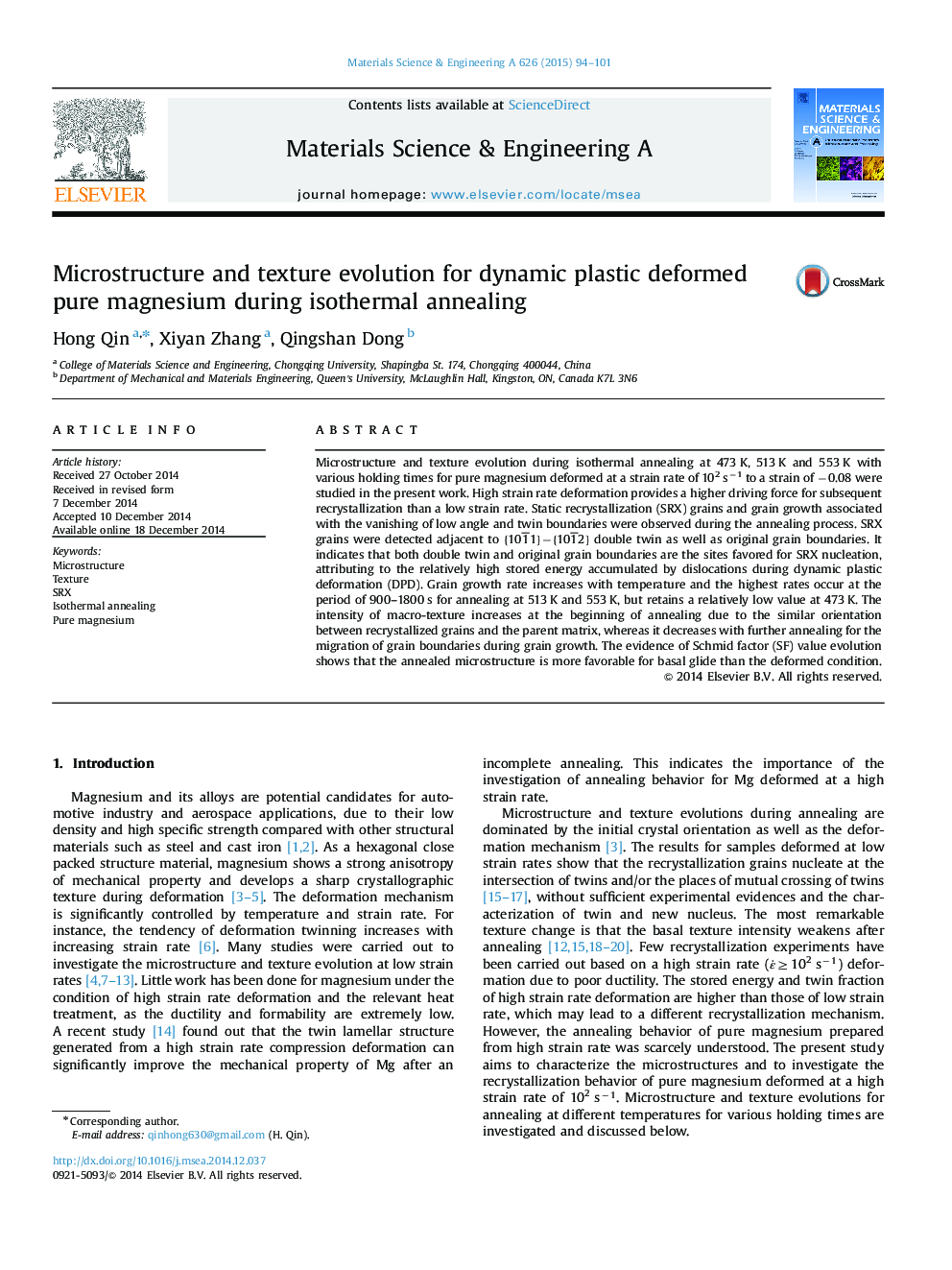| Article ID | Journal | Published Year | Pages | File Type |
|---|---|---|---|---|
| 7978736 | Materials Science and Engineering: A | 2015 | 8 Pages |
Abstract
Microstructure and texture evolution during isothermal annealing at 473 K, 513 K and 553 K with various holding times for pure magnesium deformed at a strain rate of 102 sâ1 to a strain of â0.08 were studied in the present work. High strain rate deformation provides a higher driving force for subsequent recrystallization than a low strain rate. Static recrystallization (SRX) grains and grain growth associated with the vanishing of low angle and twin boundaries were observed during the annealing process. SRX grains were detected adjacent to {101¯1}â{101¯2} double twin as well as original grain boundaries. It indicates that both double twin and original grain boundaries are the sites favored for SRX nucleation, attributing to the relatively high stored energy accumulated by dislocations during dynamic plastic deformation (DPD). Grain growth rate increases with temperature and the highest rates occur at the period of 900-1800 s for annealing at 513 K and 553 K, but retains a relatively low value at 473 K. The intensity of macro-texture increases at the beginning of annealing due to the similar orientation between recrystallized grains and the parent matrix, whereas it decreases with further annealing for the migration of grain boundaries during grain growth. The evidence of Schmid factor (SF) value evolution shows that the annealed microstructure is more favorable for basal glide than the deformed condition.
Related Topics
Physical Sciences and Engineering
Materials Science
Materials Science (General)
Authors
Hong Qin, Xiyan Zhang, Qingshan Dong,
